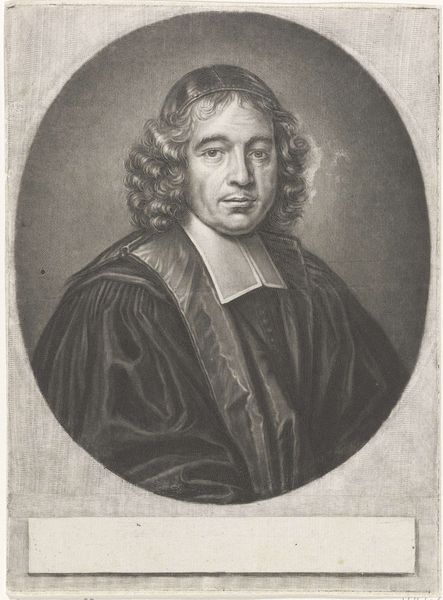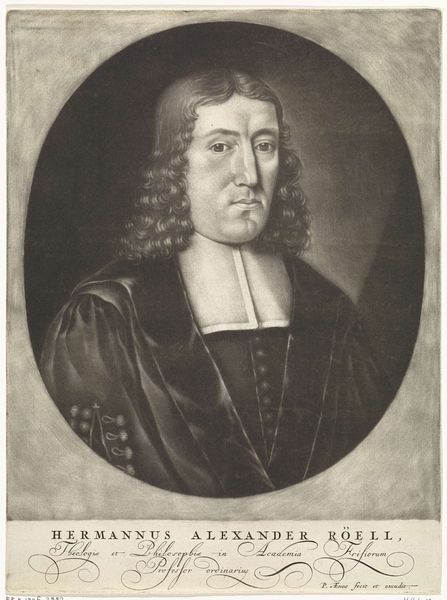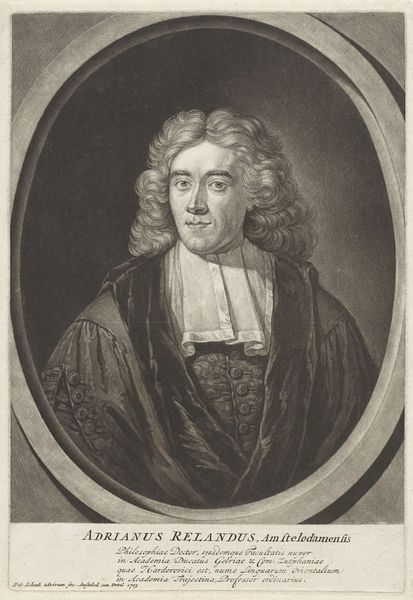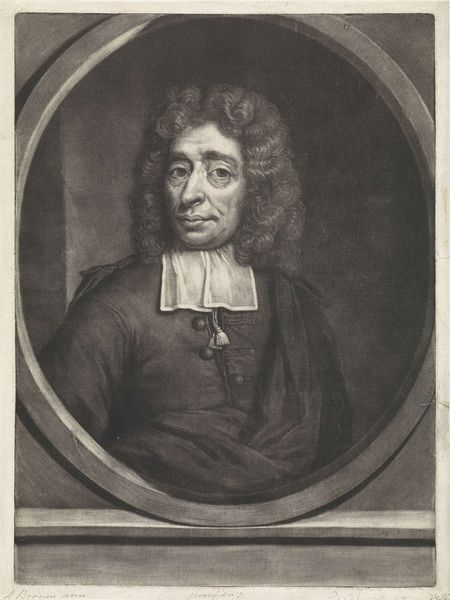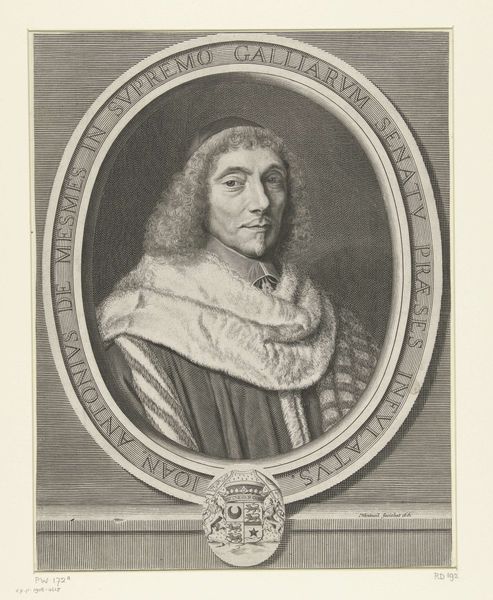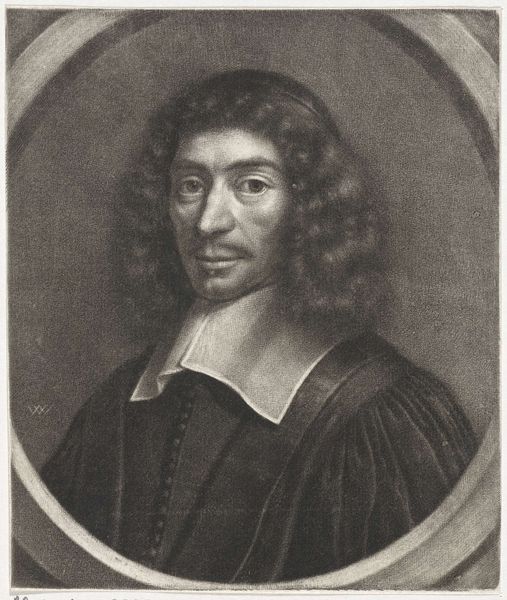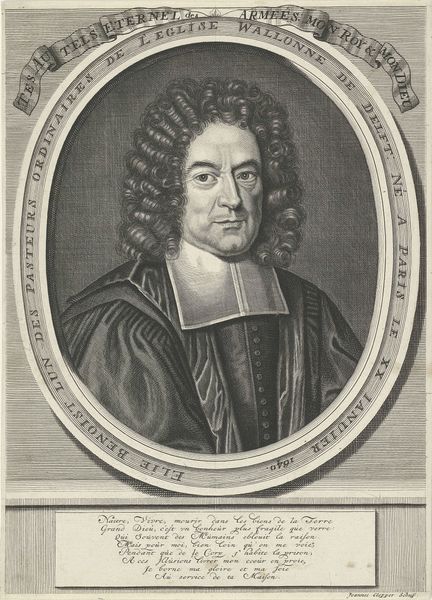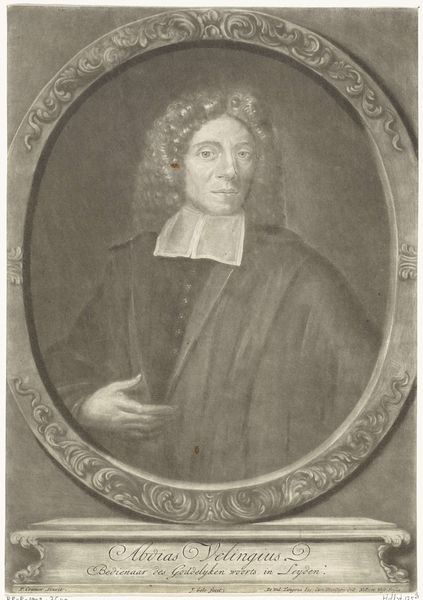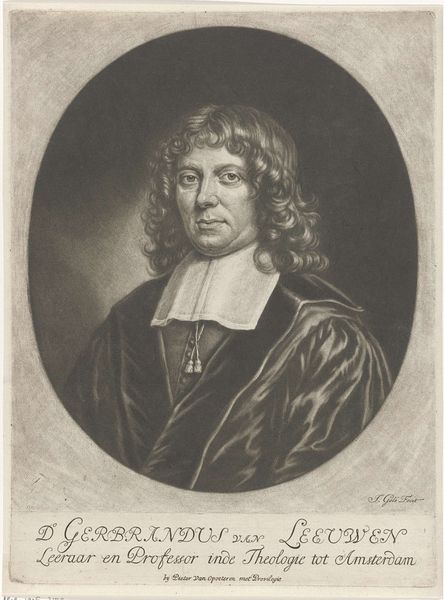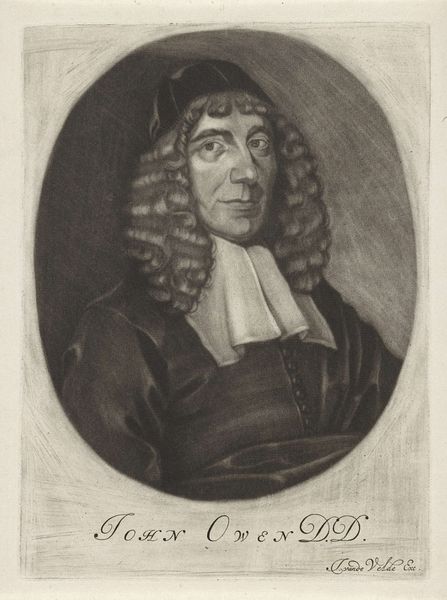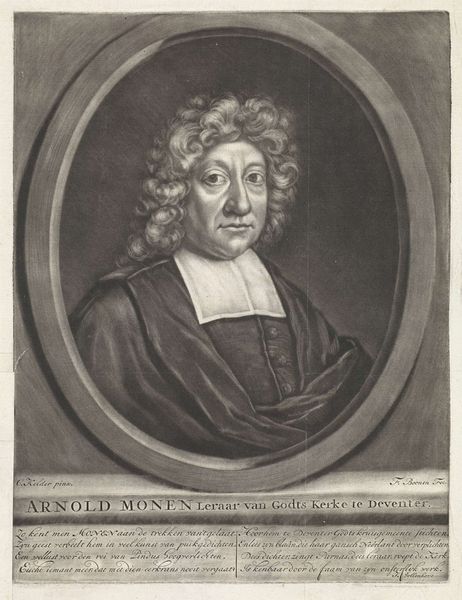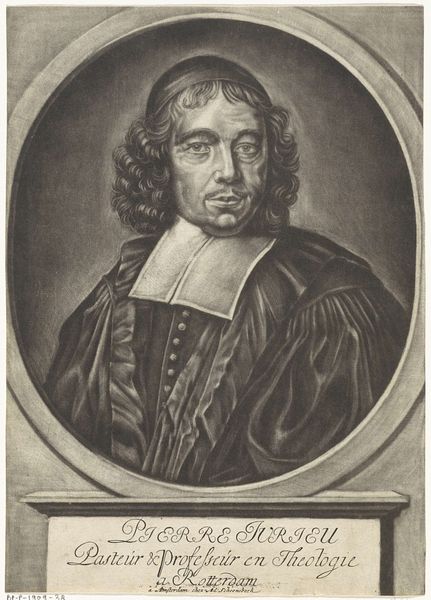
drawing, print, graphite
#
portrait
#
drawing
#
baroque
# print
#
charcoal drawing
#
graphite
#
portrait drawing
#
portrait art
Dimensions: height 342 mm, width 251 mm
Copyright: Rijks Museum: Open Domain
Curator: Oh, I immediately feel a sense of calm seriousness from this portrait. He looks so self-assured. Editor: Indeed. We’re looking at "Portret van Gerard de Vries," a drawing executed around 1685 by Michiel Gillig. It's rendered in graphite, though it emulates the effects of a print. De Vries, judging by the inscription at the bottom, was a Professor. Curator: That gaze is pretty intense, isn't it? He seems to be peering right through me, judging my late 20th-century sensibilities! What strikes me is that stark collar against that dark robe. And all those buttons. It gives him such a distinguished appearance, even stern. Editor: And that was entirely the point, I suspect! Let's contextualize: The portrait sits within a long history of representing scholarly authority and civic virtue. It's interesting how his identity, as conveyed through his clothing, bearing, and even the framing oval, adheres to very specific, pre-ordained codes of masculine intellectualism of the period. It's designed to project unwavering confidence and knowledge. Curator: So you're saying this portrait doesn't give us a glimpse into who Gerard de Vries was as a person. But more a presentation of his social role? Does he even *like* wearing all those buttons? Maybe they itch! Or pinch! Editor: That’s the thing, isn’t it? Even details like those precisely rendered curls serve to emphasize status. Michiel Gillig is operating within artistic and social conventions of the Baroque to reinforce ideas about knowledge, virtue and status. This was how people expected to be seen and remembered. We can consider portraiture through the lens of performativity; what the sitter consciously performed for the portrait and how the artist performed that performance into the work of art. Curator: Performativity! Right. Well, whether or not those curls were itchy, the portrait certainly gives me something to think about when considering what and how identities were being created at this time. I appreciate the skill it took to render the image. Editor: And for me, thinking about what's *behind* that serious expression—what this man was actually thinking, feeling is irresistible. Thank you for unveiling another rich perspective on Baroque identity construction through art, your approach has really enhanced the experience!
Comments
No comments
Be the first to comment and join the conversation on the ultimate creative platform.
